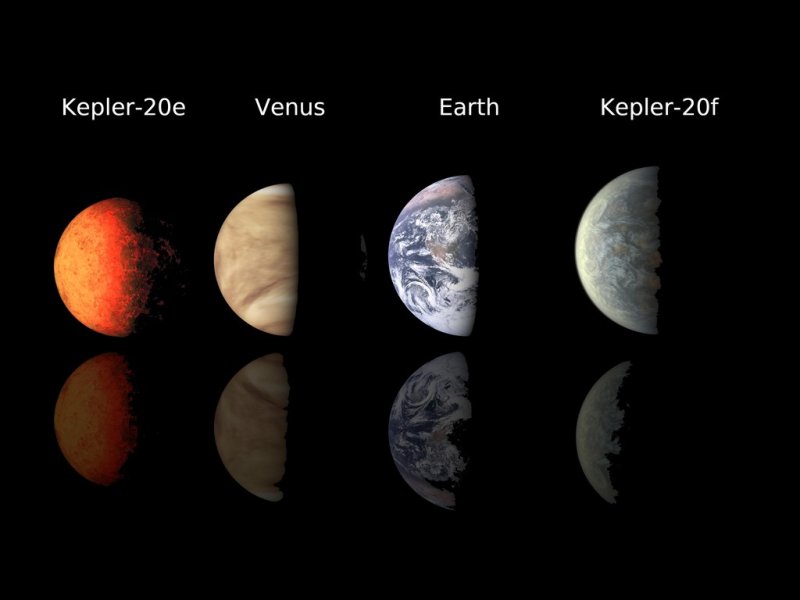This chart compares artist's concept images of the first Earth-size planets found around a sun-like star to planets in our own solar system, Earth and Venus. Credit: NASA/Ames/JPL-Caltech
CAMBRIDGE, Mass., Dec. 20 (UPI) -- NASA says its Kepler space telescope has discovered the first Earth-size planets orbiting a sun-like star outside our solar system.
While the planets, called Kepler-20e and Kepler-20f, are too close to their star to be in the so-called habitable zone where liquid water could exist on a planet's surface, they are the smallest exoplanets ever confirmed around a star like our sun, a release by the space agency said Tuesday.
Kepler-20e is slightly smaller than Venus while Kepler-20f is a bit larger than Earth, and both planets orbit in a five-planet system called Kepler-20, approximately 1,000 light-years away in the constellation Lyra.
"The primary goal of the Kepler mission is to find Earth-sized planets in the habitable zone," Francois Fressin of the Harvard-Smithsonian Center for Astrophysics in Cambridge, Mass., said. "This discovery demonstrates for the first time that Earth-size planets exist around other stars, and that we are able to detect them."
Kepler-20e orbits its parent star every 6.1 days and Kepler-20f every 19.6 days, short orbital periods that mean the planets are very hot, inhospitable worlds.
Still, their discovery is yet another milestone in the ultimate search for planets like Earth, scientists said.
"In the cosmic game of hide and seek, finding planets with just the right size and just the right temperature seems only a matter of time," said Natalie Batalha, Kepler deputy science team lead and professor of astronomy and physics at San Jose State University. "We are on the edge of our seats knowing that Kepler's most anticipated discoveries are still to come."















